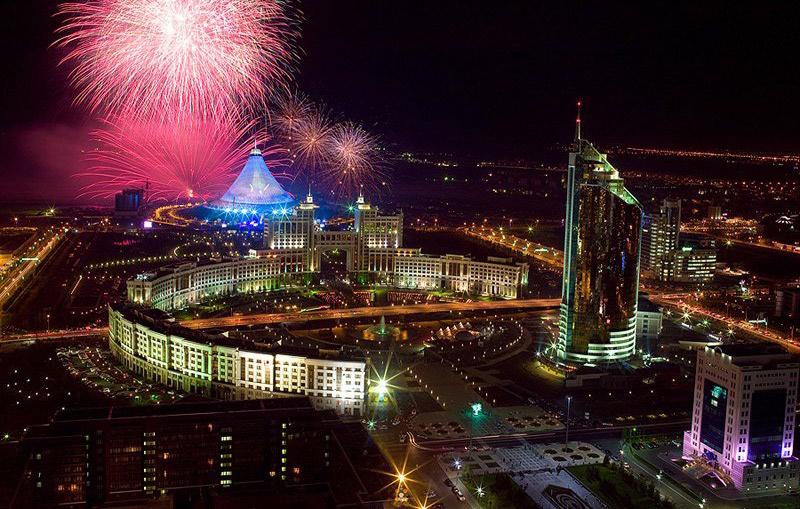Creating a successful new capital city is an enormous challenge. Putting the physical infrastructure in place is, of course, highly complex, requiring vision, detailed planning and commitment. But ensuring that the new capital moves from being an artificial creation to a city with a life of its own and a natural place within the country is an even bigger task.

Brazil, which replaced Rio de Janeiro with Brasilia as its capital in 1961, is widely regarded as the country which has managed this best. Brasilia now has a population fast approaching three million on a site which 60 years ago was barren land. What is even more striking is how the original vision behind its creation has been adopted and then adapted by its inhabitants.
As one of the world’s youngest capitals, Astana is, of course, a much younger capital than Brasilia, having only held the status for 17 years. It is not yet the finished article, but what has been achieved has been truly remarkable. A new political, economic and cultural powerhouse has risen.
Unsurprisingly, not everyone was confident of this success when the decision was made on July 6, 1994 that the capital should eventually be moved from Almaty to what was then called Akmola. It was, after all, a huge enterprise for a young country which faced many other challenges. Foreign diplomats were just some of those wary of the switch.
Yet the decision was not just a statement about the ambition of Kazakhstan, but had many practical advantages. For the first time, it placed the capital close to the centre of the country. There was plenty of space to grow, something geography made much more difficult in Almaty. And unlike Brasilia which was built from scratch, the new capital was based on a 270,000-strong town with more than 150 years of continued settlement history as an important regional centre in North and Central Kazakhstan.
It was in May 1998 that Akmola was renamed Astana which, as many of our readers know, means “the capital” in Kazakh. A few weeks later, the city was officially presented to the world as Kazakhstan’s new capital. July 6 is marked with annual Astana Day festivities.
There is a great deal to celebrate. Envisioned and masterminded by President Nursultan Nazarbayev, who invented the whole idea and managed to persuade the Parliament and the nation of its feasibility, Astana has been transformed in an extraordinarily-short time from a provincial city to Central Asia’s major political, economic, and tourist centre.
Carefully planned, it is home to landmark buildings designed by many prominent architects such as Norman Foster, Manfredi Nicoletti and Kise Kurokawa. The spectacular cityscape they created vividly represents the mix of cultures found within our borders, our position between Europe and Asia and the rising influence and status of Kazakhstan in the world.
With a population that tripled in 18 years, from 270,000 in 1996 to over 850,000 in 2014, Astana is already the country’s second largest city. It is forecast that the number of people living and working in the capital will before long pass one million. In the early years, the rise in population was largely a result of Astana’s role as the country’s new political and administrative centre. But it is the city’s economic success which will contribute most to its future growth.
Astana is already home to over 70 major enterprises and many thousands of fast-growing small and medium-sized businesses. Foreign firms, attracted by the benefits of the free economic zone, are increasingly investing in the city and looking to form long-term partnerships. Ambitious plans and incentives to develop the Astana International Financial Centre are already being put in place.
The city’s universities have helped to position Astana as a promising hub for hi-tech and knowledge industries. It is a reputation which EXPO 2017, through its focus on future energy, will only enhance. The event is seeing new investment in the city’s transport infrastructure, while the EXPO site is being carefully planned to leave a legacy of a vibrant new quarter for Astana with new homes, workplaces and academic buildings.
For a capital city to truly prosper, it must offer more than politics and commerce. Astana is home to remarkable cultural venues that showcase the rich history of the country and see regular performances by leading Kazakh and international artists. In addition to the top-line venues, there is also more to see and experience every month. Astana, not surprisingly, does not yet have the history or lively cultural tradition of the much-longer established Almaty, but it is catching up fast. It is a magnet for the young and talented and they are helping shape an increasingly-attractive place to live. Kazakhstan is fortunate – and unique in the region – in having in Almaty and Astana two such major international cities within its borders. That will undoubtedly be one of a number of Nazarbayev’s indisputable legacies for the Kazakh nation.
Although Astana Day will perhaps be recognised most enthusiastically in the city, it is a national celebration. There will be events across Kazakhstan to mark the anniversary. Astana is the whole country’s property in which everyone, wherever they live, takes pride. It is a physical symbol of the modern, dynamic and influential country that the Kazakh people are creating together and how, with boldness, ambition and determination, all challenges can be overcome.

